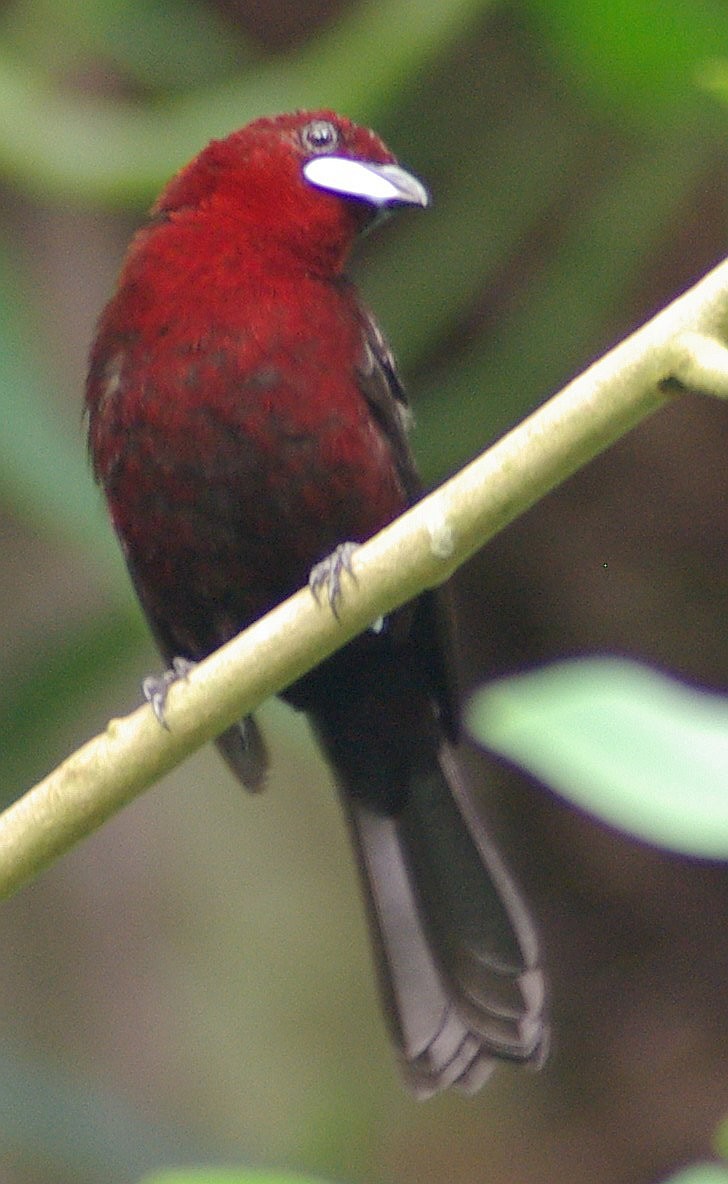Silver-beaked Tanager
A species of Silver-billed tanagers Scientific name : Ramphocelus carbo Genus : Silver-billed tanagers
Silver-beaked Tanager, A species of Silver-billed tanagers
Botanical name: Ramphocelus carbo
Genus: Silver-billed tanagers
Content
Description General Info
 Photo By TomR , used under CC-BY-SA-2.5 /Cropped and compressed from original
Photo By TomR , used under CC-BY-SA-2.5 /Cropped and compressed from original Description
The silver-beaked tanager (Ramphocelus carbo) is a medium-sized passerine bird. This tanager is a resident breeder in South America from eastern Colombia and Venezuela south to Paraguay and central Brazil, Perú and on Trinidad. It is common and conspicuous. Silver-beaked tanagers are 18 centimetres (7 in) long and weigh 25 grams (0.88 oz). Adult males are velvety crimson black with a deep crimson throat and breast. The upper mandible of the bill is black, but the enlarged lower mandible is bright silver in appearance. The bill is pointed upwards in display. The female is much duller, with brownish upperparts, reddish brown underparts and a black bill. There is considerable plumage variation between the various subspecies, differing mainly in the degree of contrast between the upperparts and the throat and breast. It occurs in light woodland and cultivated areas. The bulky cup nest is usually built in a bush, and the normal clutch is two green-blue eggs blotched with black-brown. The female incubates the eggs for 11–13 days before they hatch. The chicks fledge after another 11–12 days. Individuals may live at least 11 years in the wild. These are social birds which eat mainly fruit, but insects are also taken. The silver-beaked tanager is often seen in groups of six to ten, frequently giving a call described as cheeng. Its song is a slow thin kick-wick. The silver-beaked tanager was first described by the German naturalist Peter Simon Pallas in 1764 and given the binomial name Lanius carbo. 
Size
17 cm
Life Expectancy
9 years
Nest Placement
Tree
Feeding Habits
Silver-beaked Tanager primarily consumes arthropods, fruit, flowers, and nectar. Its foraging often involves gleaning foliage and sometimes catching insects in flight, displaying a flexible diet with a preference for certain fruits, supplemented by protein-rich arthropods.
Habitat
The silver-beaked Tanager predominantly inhabits bushy forest borders, overgrown clearings, and second growth areas. These birds favor shrubbery around human settlements and dense bushy vegetation along riverbanks in humid environments. They can also be found in dry, scrubby regions and degraded areas, as well as open woodlands but tend to avoid the interior of dense forests. Typically, the silver-beaked Tanager resides at altitudes from lowlands up to 1200 meters, though in some regions, such as in Venezuela and Peru's Urubamba Valley, they are found at elevations up to 1900 and 2000 meters respectively.
Dite type
Frugivorous
General Info
Feeding Habits
Bird food type

Fruit
Species Status
Not globally threatened.
Scientific Classification
Phylum
Chordates Class
Birds Order
Perching birds Family
Tanagers Genus
Silver-billed tanagers Species
Silver-beaked Tanager